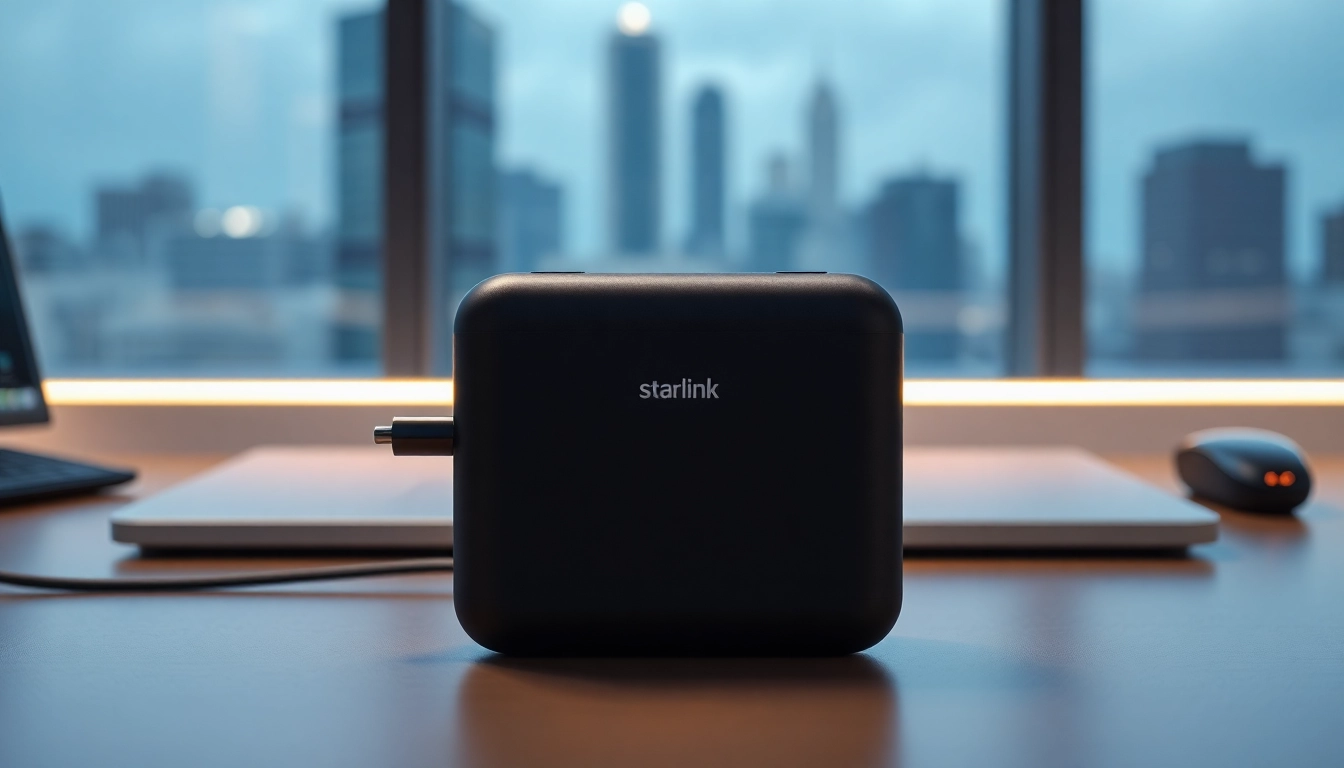Understanding AI Checkers: What They Are and Why They Matter
The Definition of AI Checker
An AI checker is a specialized tool designed to identify whether a piece of text was generated by artificial intelligence (AI) systems such as GPT-3, GPT-4, or others. These checkers employ various algorithms and methodologies to analyze and interpret text characteristics, language patterns, and structures, ultimately assessing its origin. With the rise of AI-generated content across multiple platforms, particularly in areas like education, journalism, and content creation, understanding how these checkers function is becoming increasingly essential.
Importance of AI Detection in Today’s Digital World
As AI technology continues to advance and permeate various aspects of our lives, the necessity of AI detection tools has surged. AI-generated content can vary widely in quality and intent, ranging from professional articles intended to inform to deceptive content intended to mislead. In educational settings, for instance, students may utilize AI to produce papers that may not accurately reflect their understanding of a subject, leading to issues of academic integrity. Therefore, an ai checker serves several critical roles: promoting originality, maintaining standards in education, and curbing misinformation in media. Its functionality extends to various fields, ensuring that it meets the evolving needs and expectations of users.
Common Features of Effective AI Checkers
Effective AI checkers typically include several features designed to maximize user experience and detection accuracy. These features often encompass:
- Multi-Layer Analysis: Many AI checkers utilize sophisticated algorithms that delve deep into text structures, syntactical choices, and semantic nuances, allowing them to differentiate between human-created and AI-generated content.
- User-Friendly Interface: Accessibility plays a vital role, with intuitive design facilitating smooth user interaction. A clear layout helps users operate the tool effectively, whether they’re tech-savvy or not.
- Result Interpretation Tools: Beyond simply stating whether a text is AI-generated, effective checkers often provide metrics and analytics that help users understand the results better, such as likelihood scores, flagged sections, and comparisons with known AI patterns.
- Integration with Other Platforms: Seamless integration with writing software, learning management systems, or web browsers can enhance usability, allowing users to check texts without disrupting their workflow.
- Privacy Protections: As users may input sensitive or proprietary content, leading AI checkers ensure robust privacy and data security features, allowing users peace of mind regarding their intellectual property.
How to Use an AI Checker: A Step-by-Step Guide
Choosing the Right AI Checker for Your Needs
When selecting the ideal AI checker, several critical factors come into play. First, discern your specific needs — are you a student looking to ensure academic integrity, or a content creator requiring originality checks? Then, consider the following:
- Accuracy: Review user feedback or comparative analyses to determine the reliability of the checker. Accuracy rates can vary significantly across platforms.
- Supported Languages: Consider whether the checker supports multiple languages, especially if your work involves non-English texts.
- Pricing Structure: Some tools may offer free trials or basic versions, while others function on a subscription basis. Analyze your budget and desired features accordingly.
- Additional Features: Explore any supplementary services provided, such as plagiarism checks or content enhancement advice.
Inputting Text: Best Practices for Accuracy
To achieve the highest accuracy with an AI checker, follow these best practices when inputting text:
- Ensure Text Completeness: Input a complete document rather than fragmented sections, as this provides context that the checker utilizes for more precise analysis.
- Avoid Overly Complex Phrasing: While it may be tempting to alter text specifically for analysis, such adjustments could introduce bias into the results. Use original wording as much as possible.
- Check Formatting: Before submission, confirm that formatting errors (like missing punctuation or corrupted formatting) do not compromise the checker’s ability to interpret the text effectively.
Interpreting Results: What to Look For
Once the AI checker has processed the text, users must be informed on how to interpret the results. Typical output includes:
- Likelihood Score: Many AI checkers produce a percentage indicator of the likelihood that the text is AI-generated. Higher scores often correlate with human-like composition.
- Flagged Phrases: Some results may indicate specific phrases or sections that triggered the detection, providing insight into common patterns or errors made.
- Comparative Analytics: Advanced checkers might include benchmarking against known AI outputs, highlighting how closely your text aligns with detected AI models.
Comparing Popular AI Checker Tools: Features and Effectiveness
Overview of Top AI Checker Tools
A wide range of AI checkers is currently available, and understanding the distinct capabilities of the most prominent tools can aid in informed selection. Here are some noteworthy options:
- GPTZero: Positioned as a comprehensive AI detection tool, GPTZero boasts extensive media coverage and capabilities to analyze up to 50,000 characters.
- QuillBot: Known for its user-friendly interface, QuillBot provides robust AI detection features alongside other writing assistance tools.
- Grammarly: While primarily a grammar-checking tool, Grammarly has introduced AI detection as part of its suite, appealing to writers seeking reassurance regarding their content’s integrity.
Feature Comparison: Pricing, Accuracy, and Ease of Use
When delineating the features of AI checkers, several criteria emerge as critical:
| Tool | Pricing | Accuracy | Ease of Use |
|---|---|---|---|
| GPTZero | $0 – Free to use | Very High | Intuitive Interface |
| QuillBot | $15/month | High | User-Friendly |
| Grammarly | $12/month | Moderate | Easy Integration |
User Reviews and Case Studies
Considering real-world applications of AI checkers significantly contributes to understanding their effectiveness. User reviews often highlight not only satisfaction but also areas for improvement. For instance:
- Student Perspectives: Users frequently mention how AI checkers have aided them in academic honesty, providing them with the assurance that their submissions represent original work.
- Marketing Professionals: Professionals cite AI checkers as valuable for maintaining brand voice and ensuring that content aligns with audience expectations in terms of tone and authenticity.
Common Challenges When Using AI Checkers
Limitations of Current AI Detection Technology
Despite the advancements in AI detection technology, several challenges persist. Chief among these are:
- False Positives and Negatives: No detection tool is immune to misinterpretation. Background noise in text can inadvertently be flagged as AI-generated content, while genuinely AI-produced text might slip through unchecked.
- Dynamic AI Models: As AI technology evolves, checkers must continually adapt to the new outputs that stem from advanced models, which may not always keep pace with updates.
How to Improve Detection Consistency
Improving detection techniques hinges upon research and technological advancements. Strategies might include:
- Feedback Loops: Implementing systems that analyze incorrect assessments can help refine algorithms over time, enhancing overall accuracy.
- Cross-Referencing Databases: Building comprehensive databases of AI-generated texts can aid in developing patterns and benchmarks against which new submissions can be measured effectively.
Handling False Positives and Negatives
Understanding that both false positives and negatives will happen, users are encouraged to approach AI checker results with a critical mindset. Based on user experience, solutions include:
- Supplementary Analysis: Utilizing multiple detection tools in conjunction can help corroborate results, mitigating errors.
- Manual Review: Having a human review flagged content can eliminate misunderstandings and verify authenticity.
The Future of AI Checkers: Trends and Innovations
Emerging Technologies Impacting AI Detection
As the landscape for digital content continues to evolve, so too do the technologies underpinning AI detectors. Some innovative trends include:
- Machine Learning Enhancements: Advancements in machine learning will allow AI checkers to refine their methodologies, learning from each new submission to better identify patterns.
- Contextual Awareness: Future incidences may include greater contextual awareness, enabling deeper understanding of nuance in content creation.
Anticipated Changes in User Needs and Expectations
As awareness of AI-generated content increases, user needs are likely to evolve:
- Greater Demand for Customization: Users might seek tailored checkers capable of adapting algorithms based on specific industries or content types.
- Emphasis on Educational Resources: Beyond detection, users may require more insights into improving writing skills and learning to create content that naturally resists AI generation.
The Role of AI Checkers in Promoting Originality
The growing reliance on AI content generators has sparked discussions around the importance of promoting originality and creativity. AI checkers are positioned uniquely in this conversation, serving as guardian tools that promote originality in writing. By ensuring transparency in content generation, they nurture trust between creators, audiences, and educational institutions. In the ever-evolving digital landscape, effective use of AI checkers is essential for upholding content integrity and fostering innovation among writers and creators.















Leave a Reply